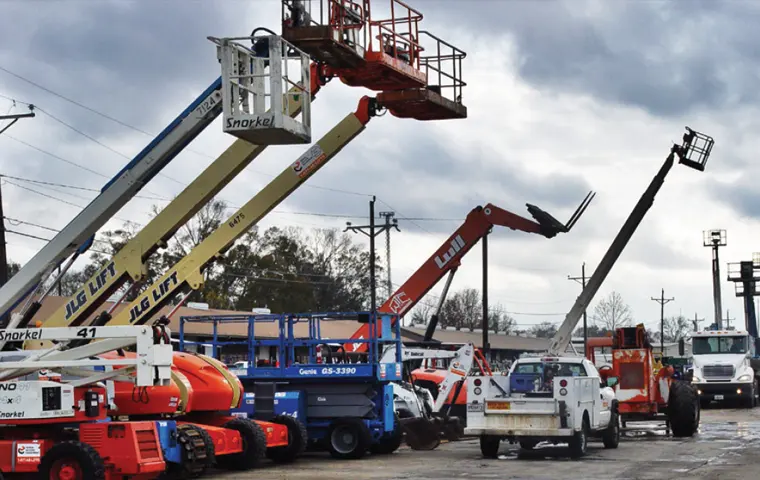
For businesses with large assets deployed in the field, GPS asset tracking serves several purposes.
- It improves the efficiency of service and recovery operations.
- It enables accurate record-keeping for yard management, billing, and insurance.
- It is a powerful tool for loss prevention.
Tracking and managing large assets can improve efficiency, increase productivity, and maximize revenue. Here are six proven ways asset tracking can save costs and improve a business’s bottom line.

Asset Tracking Combined With Fleet Tracking Streamlines Service and Recovery
Adding asset tracking to your fleet telematics solution is like having 20/20 vision. Seeing and managing the assets, trucks, and service vehicles needed for delivery, service, and recovery is far easier. It adds an essential layer of reporting and control to fleet and field operations.
The High Costs of Rework
One major portable restroom operator estimated the costs of a mistake in the recovery of one of their units at $150 per incident. With a combined view of the fleet and all deployed units, they avoid expensive rework.
Mobile assets are often deployed to locations like construction sites or entertainment venues. These assets may move around, so servicing and recovering these assets can be difficult. This can require many trips if they are misplaced. A combined view of vehicles and assets lets dispatchers guide workers to exact locations. This means they can complete their work on the first attempt.
Asset Tracking Simplifies Yard Management and the Movement of Assets
GPS tracking on trucks and assets helps track equipment and trailers, so you can identify specific loads. Geofence alerts give notice on the arrival of loads or equipment for the advance organization of unloading or service teams.
Asset Tracking Helps in Recovery of Stolen Equipment and Assets
According to the National Insurance Crime Bureau, stolen construction equipment costs over $1 billion. Less than 20% of stolen equipment is ever recovered. Asset tracking offers real-time alerts to notify fleet management if anyone moves equipment where or when it shouldn't be.
Fleets can set the tracking hardware to change from one ping per day to one ping per hour. This allows asset recovery work to begin immediately as law enforcement can locate the equipment. Theft reduction tools like asset tracking may lower insurance premiums and discounts.
Asset Tracking Helps in Detecting and Preventing Unauthorized Use
Alerts and reports aid in locating stolen equipment and assets. But they can also help detect and prevent unauthorized use. This can help stop unauthorized use of assets as well.
Asset Tracking Helps Businesses Maximize Revenue from Asset Deployments
One top benefit of an asset tracking solution is getting more accurate billing for deploying and using assets at customer sites. The activity reports provide dates, times, and GPS data detailing when and where assets are used. This data brings transparency to billing and is much easier than paper logs and sheets.
Asset Tracking Saves Time and Labor and Improves Yard Management
Tasks associated with managing mobile assets add to a company’s administrative burden and overhead. These assets may include trailers, containers, tanks, construction equipment, ag implements, etc.
Asset tracking offers data and reports that simplify all aspects of your fleet business. This lets you free up office workers from low-value tasks and redeploy them to perform higher-value functions in the business.
How to Evaluate an Asset Tracking Solution
When you’re choosing an asset tracking solution, you’ll find that there are several on the market to consider. Here are a few features to look for in an asset tracking solution:
- Go for an automatic asset tracking solution that doesn't need employees to manually scan assets in and out. This prevents human error from causing problems and will help you pinpoint theft or unauthorized use.
- Rechargeable asset trackers are good options for tracking powered assets. Long Life Asset Trackers are suitable for unpowered equipment. Look for a system that offers both options to maximize use your GPS asset tracking.
- Look for a solution that offers custom reporting so you can track valuable data about your fleet. This can help pinpoint under-utilized assets and better use over-taxed assets.
- A comprehensive GPS asset tracking solution should track large assets, equipment, and fleet vehicles, from the same dashboard.
Explore More

Learn about the benefits of asset tracking.
10 Quick Benefits from GPS Asset Tracking:
- Pinpoint locations for easy asset recovery
- Quickly locate your equipment at any location
- Improve billing accuracy with activity reports
- Easily find assets, even in a large yard
- Get alerts if equipment moves unexpectedly
- Get alerts if a trailer stops suddenly
- See which vehicles are in proximity to equipment
- Quickly identify under-utilized assets
- Monitor utilization for timely maintenance
- Earn insurance premium discounts
Related Resources
Best Practices for Equipment Inventory Management
How Does a GPS Tracker Work? | Azuga
What is Asset Tracking for Fleets? | Azuga








